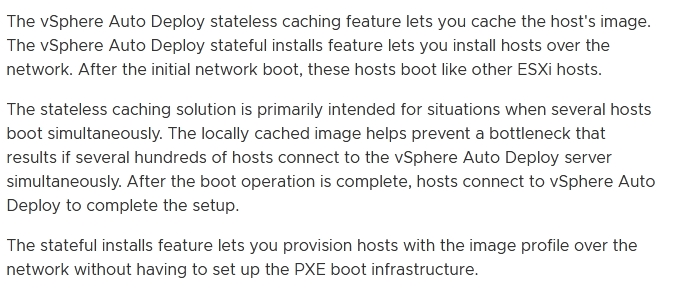I`m closer to "stateless" but I think this question doesn`t have a very meaningful answer as both "stateless" and "cached stateless" modes are possible.
Auto Deploy modes
Having completed the Auto Deploy installation procedure, let's walk-through the different modes you can use to configure vSphere Auto Deploy. There are three possible installation types you can use:
Stateless: The ESXi image is not technically installed but it is loaded directly into the host's memory as it boots.
Stateless caching: The image is cached on the local disk, remote disk, or USB. If the Auto Deploy server is not available, the host boots from the local cache.
Stateful: The image is cached on the local disk, remote disk, or USB. As compared to stateless caching, the boot order is inverted; the host boots first from local disk then from the network.
https://www.oreilly.com/library/view/mastering-vmware-vsphere/9781787286016/28754c90-98d5-4f29-9606-1f1c2e3e1b11.xhtml
